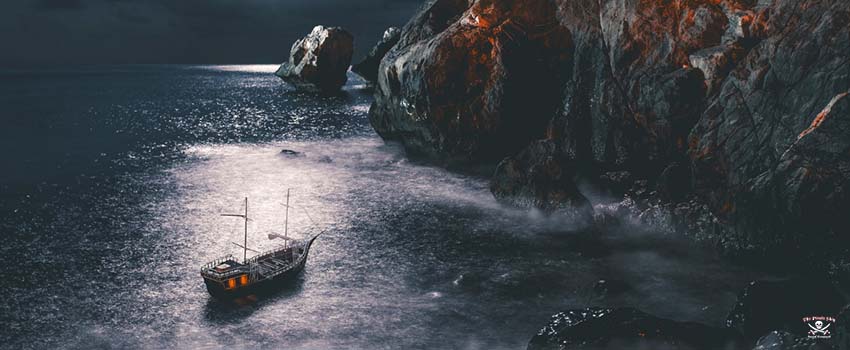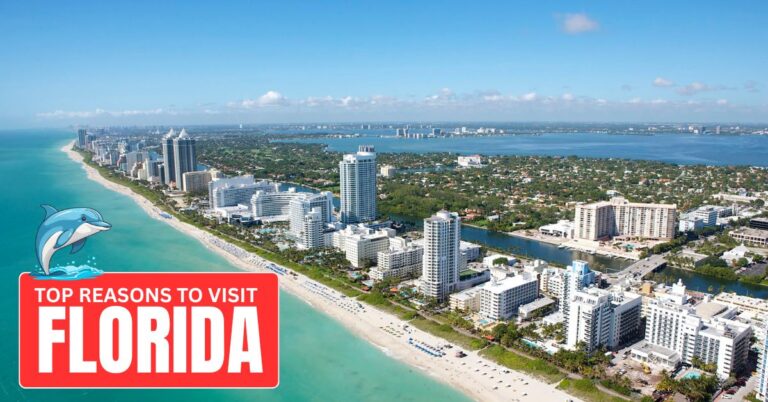Where did pirates live? When the plundering season came to an end, pirate strongholds beckoned weary seafarers to their nefarious ports. There, pirates enjoyed all manner of seedy shenanigans, protected by the reputation of these coastal havens. Pirate hideouts in the Caribbean attracted like-minded pillagers to plan their next move. These hideouts weren’t relegated to dank caves, either. From fortresses to thriving ports of call, these were as close a home for a pirate than they would ever find on land.
Tortuga, Haiti
The island of Tortuga began its history as a pirate’s hideout in the early 1600s. Former slaves and French settlers made up the early population of the island. There, they dubbed themselves buccaneers, a word taken from a cooking method known as “boucaner.” These pirates garnered a reputation as hosts of a friendly port for pirates far and wide.
From Tortuga, the buccaneers launched raids on Spanish settlements along the Cuban coast. By 1640, the buccaneers began calling themselves the Brethren of the Coast. Fort de Rocher, replete with 24 cannons aimed at the harbor, repelled Spanish invasions and protected the island. In 1654, the buccaneers, defeated and expelled from the pirates’ hideout by the Spanish, scattered to the wind.
Though its relevancy as a pirate safe haven has come to an end, the island’s swashbuckling history lives on in pirate lore and mythology. Disney brought Tortuga back to life in 2003 for Pirates of the Caribbean: The Curse of the Black Pearl as a recruiting ground for Captain Jack Sparrow. Tortuga remains one of the most famous pirate hideouts in history.
Port Royal, Jamaica
On the southern end of Jamaica, Port Royal became one of the largest pirates’ hideouts in the Golden Age of Piracy. From the 1650s through the 1680s, the buccaneers from nearby Tortuga kept Port Royal as a second home. At one point, Port Royal earned a worldwide reputation as a port of call for traders of ill repute. With brothels, taverns, and countless pirates on the lookout for seedy ways to spend their earnings, the city became known as the “wickedest city in the world.”
Both the British and French governments gave orders to privateers of Port Royal to make trading for Spanish fleets in the Caribbean difficult. All seemed on the up and up for Port Royal until 1692, when an earthquake and tsunami leveled most of the city, killing upwards of 3,000. Some called it divine punishment, but whatever the source of the disaster, Port Royal never recovered.
Nassau, Bahamas
Of all exotic locales for a pirates hideout, Nassau was the first for pirates, by pirates. The pirate-governed island saw to it that earnings from businesses in the city found their way back into pirate pockets. Notorious pirates, including the infamous Edward “Black Beard” Teach, couldn’t resist the call of Nassau.
From 1696, when Henry Every docked the pirate ship known as Fancy in the city’s port, Nassau thrived. Erupting with booty, Every bought the favor of the Governor of the Bahamas, who turned a blind eye to pirate shenanigans on the island. Soon, egos grew too large for the island to contain.
Infamous pirates Benjamin Hornigold and Henry Jennings, once rivals, formed an alliance known as the “Flying Gang.” Nassau’s role as a pirate stronghold was then solidified and the power of the two captains combined, making for a powerful adversary on the high seas.
All good things must come to an end, even for the pirates of Nassau. Having grown too powerful in the face of world governments, King George I of England declared Nassau returned to royal governance.
As far as pirate hideout names go, Nassau earned the moniker ‘Republic of Pirates,’ which spoke to a pirate’s dream of riches and freedom. By 1718, most pirates had left the island or were imprisoned and executed, thus ending Nassau’s stint as pirate heaven.
Barataria, Louisiana
French pirate Jean Lafitte operated in the Gulf of Mexico in the early 19th century. In 1803, the United States made the Louisiana Purchase. Not long after, the US imposed an embargo on goods from England. Looking for a new location for his pirates hideout, Lafitte found Barataria, a small island off the southeastern coast. There, Lafitte launched a smuggling empire.
Barataria played host to countless privateers and pirates looking for work. Under Lafitte’s guidance, the island became known as the port of call for individuals looking for means by which to skirt the law. By 1812, the pirates on Barataria became known as The Baratarians and would play a role in the coming war between nations.
At the onset of the War of 1812, British naval officers offered Lafitte land and clemency in exchange for battling United States forces. Fearing that Lafitte would side with the enemy, US forces invaded Barataria. While dozens failed to escape, Lafitte slipped by. With a promised pardon for him and his men, Lafitte would later side with the US forces in the Battle of New Orleans. Following victory, General Andrew Jackson praised the Baratarians for their efforts. Lafitte and his crew received a full pardon from the US Government following the war.
History comes to life aboard the Pirate Ship at John’s Pass. Learn more about real life pirate hideouts among the crew of the Royal Conquest, departing daily from St. Petersburg, Florida. For more information, visit www.boattoursjohnspass.com.











